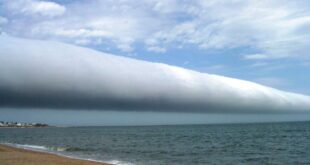- Pakistan’s Department of Archaeology warned that heavy rainfall in the Sindh province threatened the World Heritage status of MohenjoDaro.
- Between August 16 and 26, 2022, the archaeological ruins of MohenjoDaro received a record 779.5 mm of rain, which had resulted in “considerable damage to the site and partial falling of several walls, including the protection wall of the stupa dome”.
- Muneer Area, Stupa, Great Bath and other important sites of these ruins have been badly affected by the natural disaster.
- It is feared that the ruins of MohenjoDaro might be removed from the World Heritage list, therefore the authorities of Sindh have called for urgent attention towards conservation and restoration work at the site.
Key Points of MohenjoDaro
- The site of MohenjoDaro, literally meaning ‘Mound of the Dead’ is one of the important sites of Indus Valley Civilization (IVC).
- Sites of the Indus Valley Civilisation have been found in a large area extending from SutkagenDor in Balochistan near the Pakistan-Iran border to Rakhigarhi in Haryana’s Hisar district, and from Manda in Jammu to Daimabad in Maharashtra.
- Other important sites of the Harappan civilization in India are at Lothal and Dholavira in Gujarat, and Kalibangan in Rajasthan.
- Along with Harappa, MohenjoDaro is the best-known site of the bronze age (3300 BC to 1200 BC) urban civilization.
- It flourished in the Indus Valley between roughly 3,300 BC and 1,300 BC, with its ‘mature’ phase spanning the period 2,600 BC to 1,900 BC.
- Civilization went into decline in the middle of the second millennium BC for reasons that are believed to include catastrophic climate change.
- Excavation of MohenjoDaro was started in 1920 and continued in phases until 1964-65, even now only a small part of the site has been excavated.
- The prehistoric antiquity of MohenjoDaro was established by Rakhal Das Banerji of the Archaeological Survey of India in 1922.
- The site is famous for its elaborate town planning with street grids with brick pavements, developed water supply, drainage, and covered sewerage systems, homes with toilets, and monumental buildings such as the Great Granary and the Great Bath.
- At its peak, it was estimated to have between 30,000 and 60,000 residents with a highly evolved social organization.
- The ruins of the sprawling city of unbaked brick 510 km northeast of Karachi and 28 km from Larkana in Sindh were recognised as a UNESCO World Heritage site in 1980.
SOURCE: THE HINDU,THE ECONOMIC TIMES,MINT
 Chinmaya IAS Academy – Current Affairs Chinmaya IAS Academy – Current Affairs
Chinmaya IAS Academy – Current Affairs Chinmaya IAS Academy – Current Affairs



